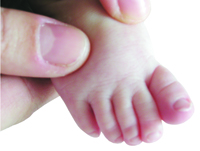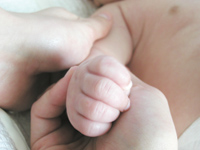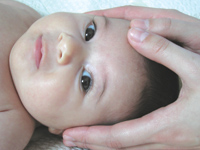
Features
Practice
Technique
Emotional Response
In essence, pre and perinatal psychology is the study of the mental and emotional life of the fetus from preconception through uterine life to birth and post-birth. Its premise is that the fetus experiences what is happening to it and that “humans” carry the cellular memory of their early life beginnings within their tissues and that these memories can be recalled.
September 22, 2009 By Patricia M. MacNeil BA RMT
In essence, pre and perinatal psychology is the study of the mental and emotional life of the fetus from preconception through uterine life to birth and post-birth. Its premise is that the fetus experiences what is happening to it and that “humans” carry the cellular memory of their early life beginnings within their tissues and that these memories can be recalled.
This being said, it follows that what is done and how it is done as well as what is expressed during pregnancy, birth and post-birth can have an impact on the newborn. The effect can be assessed in infancy or seen to have a subsequent influence on one’s approach to life, career, relationships, transition, touch and so forth. Over time these factors can impact one’s physical health as well.

|
|
|
Photo by Julie Lee
|
More often than not while infants in the Neonatal Intensive Care Unit (NICU) I worked in were given excellent medical care; rarely, were they addressed or spoken to directly. Premature infants sometimes develop what is called “inhibition of action syndrome.”
This syndrome is a defence mechanism against repeated painful touch experienced within a short time from blood tests done by pricking the heel of the baby’s foot and other procedures, which are painful to the baby but necessary to its survival.
Eventually the tiny newborn feels overwhelmed and by means of this syndrome, finds a way to “close down” in order to cope. These babies will sleep for extensive periods and their metabolism can slow down substantially. Some of the physiological effects of massage therapy on these infants include weight gain, increased breathing capacity, better bonding and attachment, temperature control and stable metabolism.
It is also impossible to say that every fetus reacts to the same situation in the same fashion. Many factors can dramatically minimize the effects of trauma on a newborn, including love, awareness of what baby is going through; talking to baby; and, most importantly, empathetic communication and touch. Also, I must emphasize that “trauma” in this context is a “relative” word. We all experience trauma daily in some ways; consequently, there are degrees of possible trauma to infants ranging from relatively minor to more severe.
It is therefore very important to develop ways of talking to mom and dad about “possible” traumatic effects on baby without instilling fear or unnecessary worry. Babies are very flexible and can heal quickly with these techniques so we need to be very positive in our wording.
Other types of possible trauma to a newborn are “assisted deliveries” where baby has to be helped out by vacuum suction or forceps. In vacuum suction, a small, usually plastic (sometimes metal) cup, connected to a vacuum pump, is passed into the vagina and attached to the baby’s head. The baby is then pulled out by means of this suction causing possible swelling and later a bruise on baby’s head. These babies may be hyper-vigilant in reaction to this manoeuvre.
With forceps delivery, forceps are positioned on either side of the baby’s head and pulled to bring baby out. They may leave pressure marks on either side of the baby’s head. Sometimes these infants may expect to be “pulled out” of situations in later life and fear direct communication or instructions.
Both infants delivered by vacuum suction and forceps may be terrified of having their heads touched, which can lead to hardship for mom, dad and baby. A possible link to Attention Deficit Disorder (ADD) has been suggested with the use of forceps during deliveries.
Another type of assisted birth is a Caesarean Section where the baby is delivered through the abdomen by surgical means. While these babies tend to have beautifully balanced heads from a cranial sacral perspective, they have not experienced the touch and stimulation that a vaginally delivered baby has gained through mum’s contractions against its skin and body. These babies need regular, consistent touch, such as massage therapy, to replace some of the emotional and physiological effects of the labour contractions against their bodies. These contractions can stimulate various body systems in baby such as pulmonary activity and nervous system functioning. Caesarean babies may also be hyper-vigilant.

|
|
| Photo by Julie Lee
|
Other possible types of trauma could be adoption, falls during pregnancy; the umbilical cord wrapped around baby’s neck or body; aspiration of meconium (baby’s body fluids); application of oxygen masks, and prematurity. Often it is not so much what has happened right after birth to baby, but most importantly, the lack of empathic communication when these things have taken place.
Much of the research in this field has been qualitative for obvious reasons; however, scientists are increasingly bringing forth new data to substantiate the intelligence and brain capacity of the fetus and to measure the impact of the outer environment on the fetal brain.
I participated in seminars and training programs on massage therapy for premature and newborn infants; babies; pregnancy; and, birth. Cranial sacral therapy for infants was also an important piece of the puzzle.
I learned a great deal in these programs but I found that I was not applying a lot of the techniques that I had studied. Instead, I was spending a lot of time initially talking to baby, pulling my energy back and gradually exploring boundaries with baby until I felt that baby was finally feeling safe enough to receive some touch. Often baby signalled its readiness by gently pressing its tiny toe or finger against my fingertip, giving me the message that I could now proceed.
We must always remember that infants are like “sponges” energetically in that they can absorb energy very easily and only become more hyper-vigilant. It is essential that a massage therapist be calm, grounded and able to pull his or her own energy back when working with infants.
I also realized that much like the way a trained massage therapist would work with a survivor of physical abuse; we also needed to devise new means of assessing trauma in infants and to develop different approaches to boundaries and touch and implement massage therapy techniques unique to various types of birth trauma.
From this perspective, I introduced an array of massage therapy techniques and approaches for assessing and treating trauma in infants.
One of these techniques I call “anchoring” (see Massage & Pediatric Conditions; Massage Therapy Canada, Winter 2002). Anchoring is critical to avoid unconsciously “retraumatizing” baby. It involves using one hand to comfort baby and one hand to treat.
The empathetic hand remains on the infant in a compassionate way (once permission has been given by the infant) while the therapist uses the other hand to determine the child’s reaction to touch and
boundary requirements.
These new approaches and techniques are crucial to assist babies in healing from birth trauma and to avoid retraumatizion.
Massage therapists working with infants should therefore have knowledge of these techniques.

|
|
|
Photo by Julie Lee
|
I’ve had the great honour of teaching and sharing many of these techniques with third-year massage therapy students from the School of Massage Therapy at Algonquin College. These students participate in a medical practicum at Ottawa’s Queensway-Carleton Birth Centre. They learn these techniques and work with mum, dad and baby, pre- and post birth and with their families.
The students are wonderful: they are thrilled to learn these techniques and they can be seen massaging mum and talking to the fetus during the massage. They also record changes in the fetal monitor while massaging mum to observe the effects of massage therapy to mum on the fetus. At other times they are observing for possible signs of trauma in baby and modifying their approach to treatment. They can be seen with dads, siblings and families bringing normalcy to a possibly traumatic or “nervous” event in the new family’s life.
In the labour rooms they work with mom and dad and talk to the fetus in mom’s belly as well. These students are pioneers, well versed in a holistic approach in a pre and perinatal setting. Families have both welcomed them and gained tremendously from their knowledge.
The application of certain massage therapy approaches and techniques has the capacity to positively affect birth and touch trauma. Massage therapists can have a positive impact on the evolution of baby’s life and to the lives of the parents.
The medical staff must carry on a heavy workload in the task of saving lives and we, massage therapists, can help them by providing touch, reassurance and normalcy to the new family thereby perhaps easing the workload of the medical staff.
Print this page